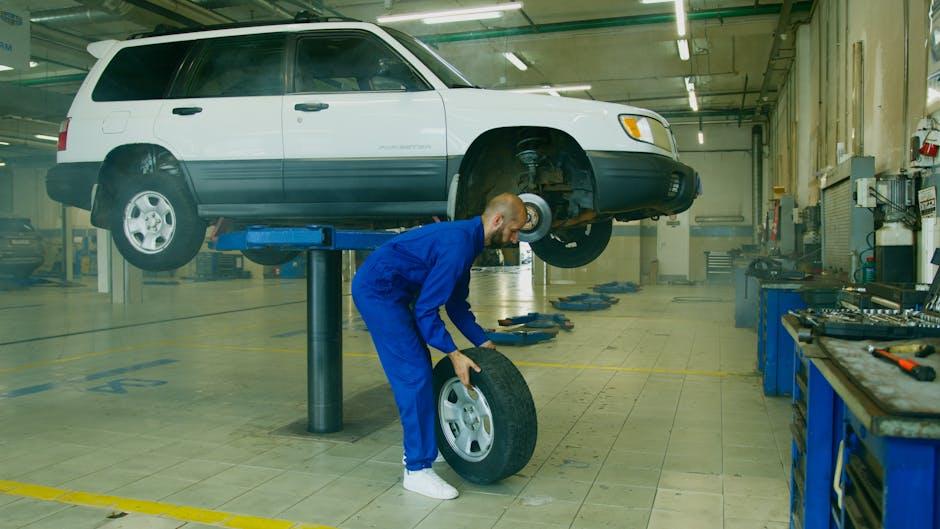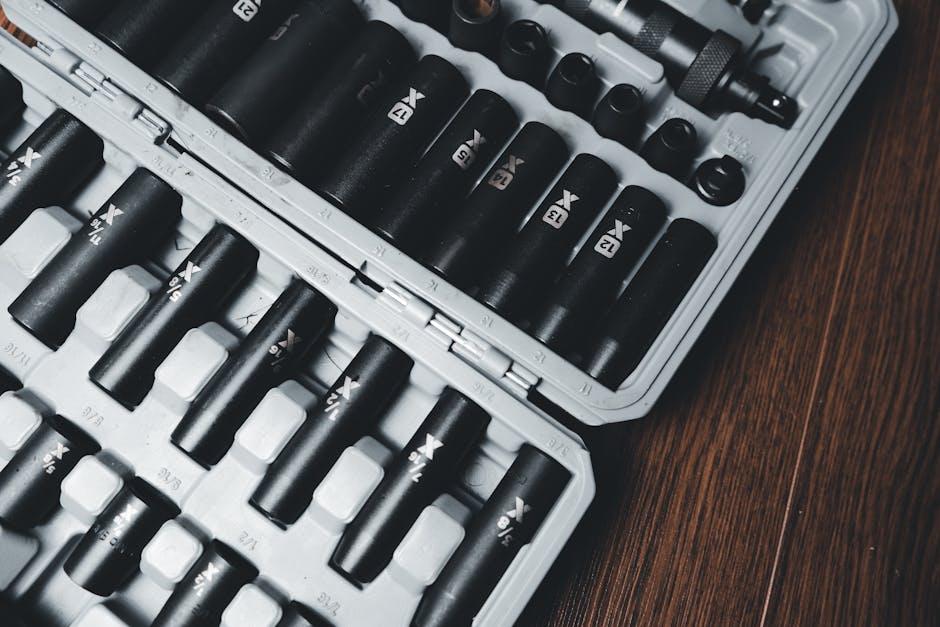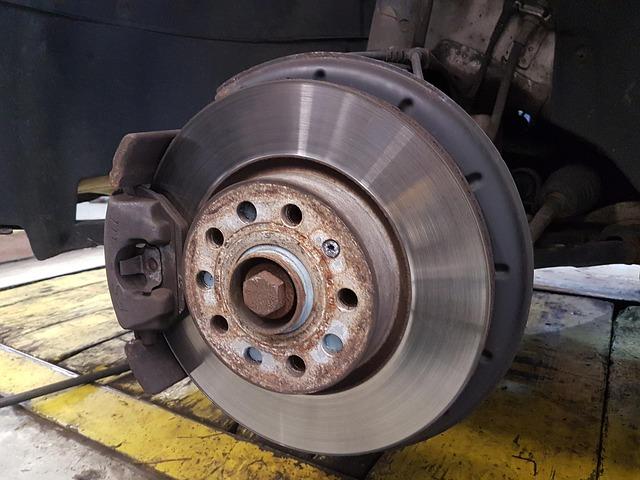Imagine cruising down an open road, your favorite song playing, when suddenly, the dashboard lights flicker and your car’s electrical system goes dark. At the heart of such unexpected glitches are often tiny, unsung heroes—or villains—in your vehicle: the fuses. These small yet crucial components protect your car’s electrical circuits from damage, but like all things, they can wear out or blow. Knowing how to replace car fuses safely not only saves you time and money but also ensures your vehicle runs smoothly without compromising your safety. In this guide, we’ll take you through the essential steps to identify, remove, and replace car fuses with confidence and care.
Table of Contents
- Understanding the Role of Fuses in Your Vehicle’s Electrical System
- Identifying the Signs of a Blown Fuse and When to Replace It
- Essential Tools and Safety Gear for Changing Car Fuses
- Step by Step Guide to Locating and Removing the Faulty Fuse
- Choosing the Correct Fuse Replacement for Your Car Model
- Testing the New Fuse and Ensuring Your Vehicle’s Electrical Safety
- Q&A
- Key Takeaways

Understanding the Role of Fuses in Your Vehicle’s Electrical System
Fuses are often overlooked components in your vehicle, yet they play a crucial role in safeguarding your car’s electrical circuits. Acting as the first line of defense, fuses prevent electrical overloads and short circuits by breaking the circuit when excessive current flows through. This action protects valuable electronic components and wiring from damage, ensuring your vehicle operates smoothly and safely. Understanding where fuses are located and what each fuse controls can save you considerable time and potential repair costs when diagnosing electrical problems.
When dealing with fuses, it’s important to keep a few key points in mind to maintain safety and efficiency:
- Always turn off the vehicle’s ignition before inspecting or replacing fuses to avoid electric shock or damage.
- Use the fuse puller or a pair of needle-nose pliers designed for automotive use to remove fuses gently without damaging the fuse box.
- Replace fuses with the exact amperage rating specified by your vehicle’s manufacturer — using a higher or lower rating can be dangerous or ineffective.
- Keep a spare fuse kit handy in your glove box for quick replacements and emergencies on the road.
| Fuse Color | Amperage | Common Uses |
|---|---|---|
| Red | 10A | Interior Lights, Radio |
| Blue | 15A | Horn, Power Outlets |
| Yellow | 20A | Windshield Wipers, Power Windows |
| Green | 30A | Cooling Fans, ABS System |

Identifying the Signs of a Blown Fuse and When to Replace It
Recognizing when a fuse has blown is crucial to maintaining your vehicle’s electrical system without unnecessary trouble. Common symptoms include sudden loss of power to specific components such as your headlights, radio, or power windows. You might also notice a slight burning smell or see a visible break or dark discoloration in the fuse element when inspecting it closely. Keep in mind that some fuses are designed to act quickly, so even a short circuit can blow them, causing sudden electrical failures that might initially seem mysterious.
Knowing the right time to replace a fuse can save both time and money but requires careful observation. If a fuse constantly blows after replacement, this might be a sign of an underlying electrical issue rather than a simple fuse failure. Use a fuse tester or multimeter to determine the status of your fuses before swapping them out. Remember these tips for replacement:
- Always replace a fuse with one that has the exact amperage rating. Using a fuse with a higher rating can cause serious damage.
- Check the fuse box cover or owner’s manual for the fuse specifications. This helps you identify the correct fuse location and rating.
- Handle fuses with care to avoid damaging the terminals. A loose connection might cause intermittent electrical problems.

Essential Tools and Safety Gear for Changing Car Fuses
Before diving into the task of replacing a car fuse, having the right tools and safety gear at hand makes all the difference. A reliable fuse puller or a pair of needle-nose pliers can save your fingers from frustration and potential injury. Additionally, a multimeter or a fuse tester helps you quickly identify blown fuses without guesswork, streamlining the process. Don’t forget a flashlight for better visibility in tight fuse box spots, and ensure your workspace is clean and free from moisture to avoid accidental shorts.
Safety should always be your top priority. Wearing insulated gloves protects you from unexpected electrical shocks, while safety glasses shield your eyes from any debris or sparks that might occur during replacement. Never work on the electrical system with the car running; always disconnect the battery to prevent accidents. Below is a quick checklist of all essentials you should have before starting:
- Insulated Gloves – for electrical shock protection
- Fuse Puller or Needle-Nose Pliers – to safely remove and insert fuses
- Multimeter or Fuse Tester – to check the integrity of fuses
- Flashlight – for workplace illumination
- Safety Glasses – to protect eyes from sparks or debris
- Clean Workspace – moisture and clutter-free environment
- Owner’s Manual – reference for fuse location and specifications
| Tool / Gear | Purpose |
|---|---|
| Fuse Puller | Remove fuses without damage |
| Multimeter | Diagnose fuse health |
| Insulated Gloves | Prevent electric shock |
| Flashlight | Enhance visibility |
| Safety Glasses | Protect eyes during work |

Step by Step Guide to Locating and Removing the Faulty Fuse
Begin by consulting your vehicle’s owner manual to locate the fuse box, which is typically found under the dashboard, near the glove compartment, or in the engine bay. Once located, open the fuse box cover carefully; you’ll usually find a diagram printed inside the lid or in the manual. This diagram is your key to identifying the exact fuse responsible for the malfunctioning system. Make sure the vehicle is turned off and the keys are removed to avoid any electrical hazards before proceeding.
Next, use a fuse puller or a pair of needle-nose pliers to gently extract the suspected fuse. Assess the fuse visually: a blown fuse will have a broken metal strip or scorch marks inside the plastic casing. To help differentiate, refer to the table below which outlines common fuse colors and their amperage ratings, assisting you to select the right replacement:
| Fuse Color | Amperage | Usage Examples |
|---|---|---|
| Red | 10A | Interior lights, radio |
| Blue | 15A | Electric windows, mirrors |
| Yellow | 20A | Heater, air conditioning |
| Green | 30A | Windshield wipers, power seats |

Choosing the Correct Fuse Replacement for Your Car Model
Selecting the appropriate fuse for your vehicle is crucial for maintaining electrical safety and functionality. Every car model has specific fuse ratings, usually detailed in the owner’s manual or on the fuse box cover. When replacing a blown fuse, ensure you match the amperage rating exactly; using a fuse with a higher or lower rating can cause electrical failures or even pose fire hazards. Additionally, pay attention to the type of fuse—standard blade, mini blade, or maxi blade—since physical compatibility is just as important as electrical specifications.
To simplify your selection process, here’s a quick reference for common fuse ratings and their typical uses in cars:
| Fuse Rating (Amps) | Function | Common Car Applications |
|---|---|---|
| 5A | Low power circuits | Dashboard lights, sensors |
| 10A | Moderate power circuits | Radio, interior lights |
| 15A | Standard power devices | Power windows, cigarette lighter |
| 20A | High power circuits | Headlights, fuel pump |
| 30A | Heavy power demands | Cooling fans, power seats |
- Verify the vehicle’s manual: Always consult your manual to confirm fuse specifications and locations.
- Check for OEM recommendations: Original Equipment Manufacturer fuses may provide better reliability.
- Never substitute with a higher rating: This can damage components or cause electrical fires.

Testing the New Fuse and Ensuring Your Vehicle’s Electrical Safety
Once you’ve installed the new fuse, it’s essential to verify it’s functioning correctly before you close the fuse box. Begin by turning on your vehicle’s ignition and checking the specific component or circuit that was previously malfunctioning. If the electrical element powers up smoothly, this is a good sign your replacement fuse is doing its job. Use a multimeter set to continuity mode to double-check if the fuse allows current to pass through without any interruptions. This tool provides an accurate reading and helps identify if the fuse might be faulty without visually relying on the fuse wire alone.
Maintaining your vehicle’s electrical safety involves routine inspections beyond just fuse replacement. Consider the following key steps to protect your car’s electrical system:
- Inspect wiring for wear and tear: Frayed wires can cause shorts and drain your battery.
- Keep fuse box clean and dry: Moisture can corrode metal contacts within the fuse box.
- Use fuses with the correct amperage rating: Overrated fuses might let dangerous currents flow unchecked.
| Fuse Rating | Common Uses | Safety Tip |
|---|---|---|
| 10A | Interior lights, radio | Always replace with exact amp rating |
| 15A | Headlights, turn signals | Check for corrosion before replacing |
| 30A | Cooling fans, ABS | Avoid using higher-rated fuses |
Q&A
Q&A: How to Replace Car Fuses Safely
Q1: What is the purpose of a car fuse?
A1: A car fuse acts as a safety device that protects your vehicle’s electrical system by breaking the circuit if there’s an overload or short circuit, preventing damage and potential fires.
Q2: How do I know if a fuse is blown?
A2: A blown fuse often appears visibly damaged, with a broken metal strip inside or discoloration. You may also notice that the electrical component tied to that fuse—like your radio or headlights—stops working.
Q3: What tools do I need to replace a fuse safely?
A3: You typically need the car’s fuse puller (often found in the fuse box), a voltmeter or fuse tester (optional but helpful), and a replacement fuse with the exact same amperage rating.
Q4: How do I locate the fuse box in my car?
A4: Most vehicles have one or more fuse boxes located under the dashboard or in the engine compartment. Consult your owner’s manual to find the exact locations and fuse diagrams.
Q5: Can I replace a fuse without turning off the car?
A5: It’s safest to switch off the ignition and remove the key before replacing fuses to prevent electrical shock or accidental shorts. If you must work with the engine running, exercise extreme caution.
Q6: How do I choose the right replacement fuse?
A6: Always replace a blown fuse with one matching the exact amperage rating (e.g., 10A, 15A). Using a fuse with a higher rating can cause severe electrical damage and fire hazards.
Q7: What steps should I follow to replace a fuse?
A7: First, turn off the vehicle and open the fuse box. Use the fuse puller or needle-nose pliers to gently remove the faulty fuse. Inspect it for damage, then insert a new fuse with the same rating into the slot firmly. Close the fuse box and test the system.
Q8: What if the new fuse blows immediately after replacement?
A8: This indicates a possible underlying electrical problem like a short circuit. Avoid repeatedly replacing fuses and consult a professional mechanic to diagnose and fix the issue safely.
Q9: Can I use a temporary fix instead of replacing the fuse?
A9: It’s never recommended to bypass or “jumper” fuses. Such shortcuts compromise safety and can lead to severe damage or hazards.
Q10: How often should I check my car’s fuses?
A10: Regular inspection isn’t typically necessary unless you experience electrical issues. However, it’s good practice to occasionally check fuses during routine vehicle maintenance.
Replacing car fuses might seem daunting, but with proper precautions and the right tools, it’s a straightforward job that keeps your car’s electrical system humming safely.
Key Takeaways
Replacing car fuses may seem like a small task, but it’s a vital skill that keeps your vehicle’s electrical system humming smoothly. By approaching the job with caution, the right tools, and a clear understanding of your car’s fuse box, you empower yourself to handle minor electrical hiccups without a hitch. Remember, safety first—always disconnect the battery and consult your vehicle’s manual. With practice, what once felt daunting becomes second nature, ensuring your ride stays powered and problem-free on every journey ahead.


5 Comments
lewiii
lewiii
m5mzco
qvbrls
e6w6f1